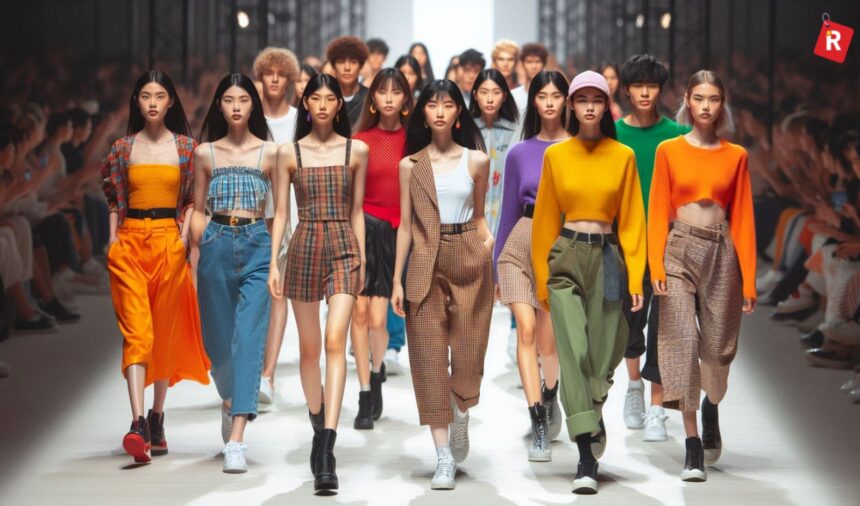Fashion has always been more than just fabric and stitching; it has always been a reflection of culture, society, and a way to express ourselves. In early 2025, the dialogue around fashion is no longer tied to the seasons. It is about identity, now and in the future, and how consumers use clothing and accessories to communicate who they are to an audience.
A Move to Personal Identities
For many years, the fashion industry was a top-down industry where a luxury house told consumers how to wear it or style themselves. In truth, it was not about identity; it was about a luxe garment. Now more than ever, those standards are upside down. Consumers are buying more than clothes, they’re buying a chance to create and project their identity to others. Social media, emerging niche communities, and direct-to-consumer labels have highly localized what consumers now expect.
Maybe a teen in Los Angeles is styling Y2K looks from thrift stores, while a working professional in New York expresses her identity by layering tailored and structured luxury bags and jewelry on minimal streetwear staples. Regardless, they are both expressing their individuality in the same way, using style as identity. Fashion isn’t dead, it has evolved into a democratized space where identities, wardrobes, and aesthetics are fluid. And that is exactly the point.
A Preference for “Statement Living”
More than anything, consumers in 2025 are eager not to share any similarity—they’re aiming for bold, statement-worthy outfits that feel like milestones, not just everyday wear. Statement jewelry, giant outerwear, wig ideas from the new couture, outlandish hair extensions… right now, fashion is to stand out, to be seen, to be told what was never thought possible, rather than to just wear, wear better, or look different.
For these reasons, shoppers are choosing to discover fashion collections that redefine style instead of filling their closets with endless basics. The collections are, of course, collections of clothing, but they let us be someone who feels and looks like themselves when they are “dressed up.” It is a transaction, and it is personal.
Technical and the Fashion Self
Technology is the nexus to all of this. Many stores now have augmented reality mirrors for customers to see the whole look as opposed to what can be seen in a committed fitting room experience. There are virtual stylists using artificial intelligence to create ‘looks’ based on a consumer’s digital footprint or their browsing habits and preferences.
The irony of all these advancements is that the human desire for self-expression hasn’t gone anywhere. People want to still be able to express themselves through texture, color, and detail in order to feel valued through self-expressed individualism. A digital tool can tell you to wear this blazer, but unless the wearer feels the power to wear it into a meeting where they must present themselves with confidence and assuredness, or it is a leisure grazing piece for a Friday night out with friends, it will remain just a suggestion.
Cultural Storytelling through Style
Every decade has its imprint in cultural memory through fashion. The 1960s were mod, the 1990s were grunge, and the 2010s were fast fashion and Instagram. What is it going to look like for the 2020s?
Thus far, it seems to be storytelling. All of our clothing now reflects a story of sustainability, a story of uniqueness, a story of cultural significance, a story of rebellion. When someone opts for vintage denim instead of new jeans, they are sharing a narrative about conscious consumption. When someone else purchases a luxury accessory, it shares a story of craftsmanship and aspiration.
Fashion in 2025 is all about storytelling; it is about identity every time you step outside.
Accessories as Identity Signifiers
It is no surprise that accessories are at the forefront of focus. Once mere “add-ons,” they now define entire looks. When you consider how a bold necklace, designer handbag, or wig made with couture-quality detail can elevate an outfit, these are not afterthoughts; they are identity signifiers that take a very basic outfit and make it extraordinary.
This shift in accessories highlights how the essentials of fashion look very different today than they did a decade ago. Rather than focusing on a capsule wardrobe capped off with only basics, today’s consumers are thinking strategically about bold, expressive, statement items. Once worn, these expressive items completely change how everything feels.
Where Individuality Clashes with Global Perspectives
With globalization, fashion is both more connected and fragmented. Consumers in Bangkok combine local textiles with fancy sneakers; Parisian designers implement elements from the casual realm of streetwear; in New York, minimalism and maximalism seem to coexist in the same neighborhoods.
The beauty of fashion in 2025 is that there is no “right way” to dress. Identity is a collage, and collages build a mosaic—something that every individual organizes in their own way.
Where Does Fashion Go from Here?
The one takeaway from the last decade is that consumers have scope to drive. Power need not remain only in the hands of fashion houses or glossy magazines for so long; power now resides with the individual, when the shopper is willing to mix vintage and luxury, or thrift and couture.
Trends will always change, but the truth will always stay the same: fashion is about identity, and it is the most personal form of cultural storytelling.
For those readers still eager to explore global fashion shifts, you can always find more on this site.


